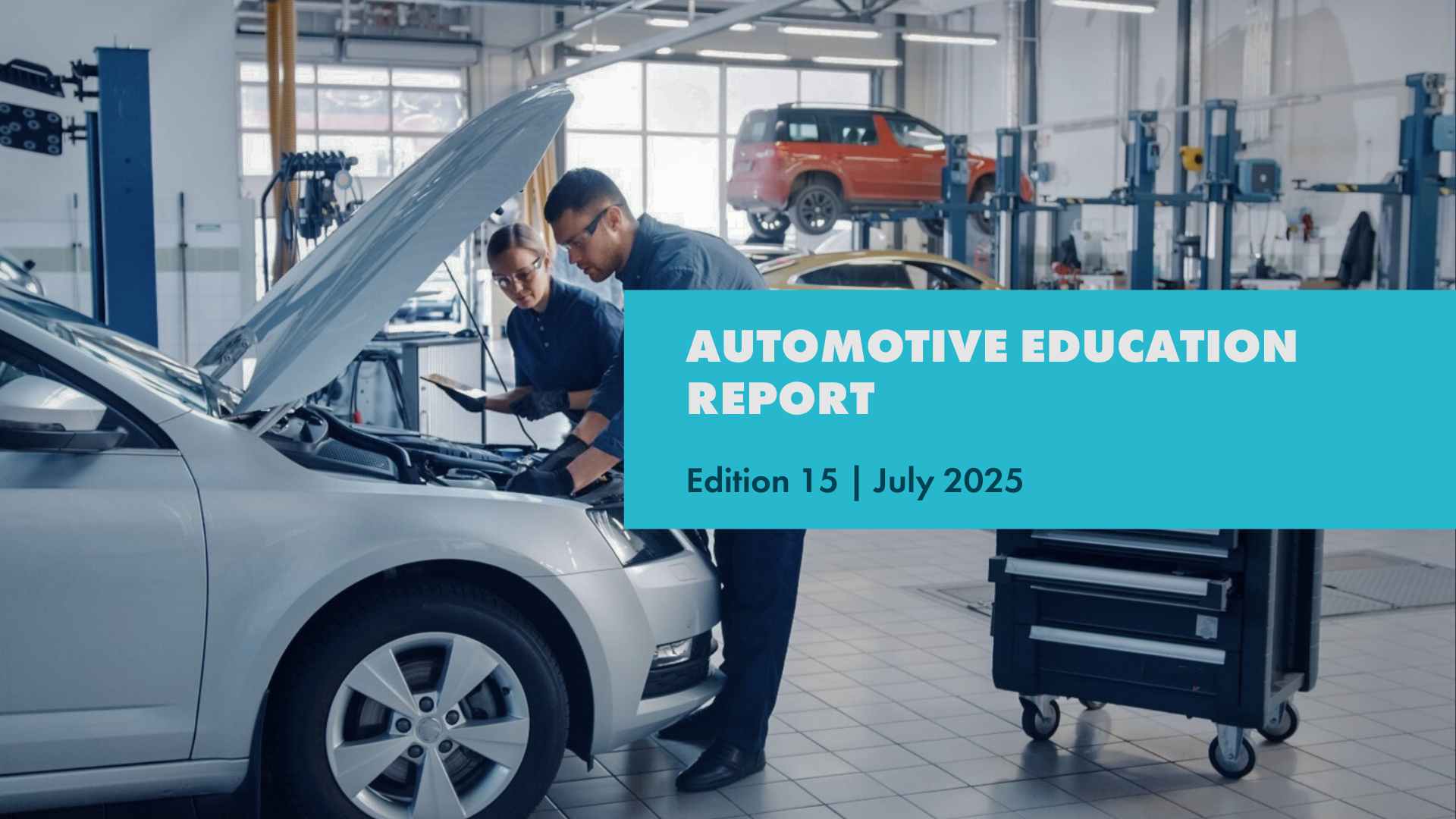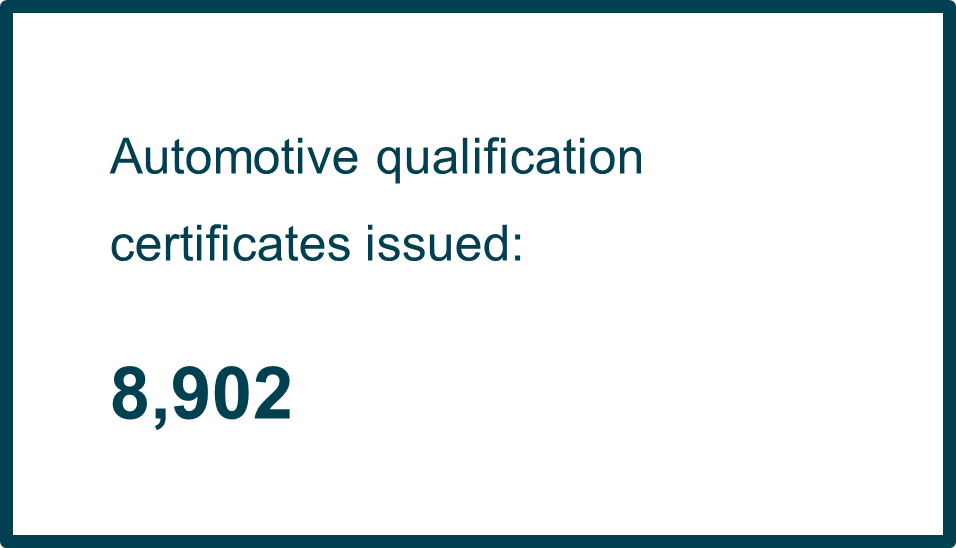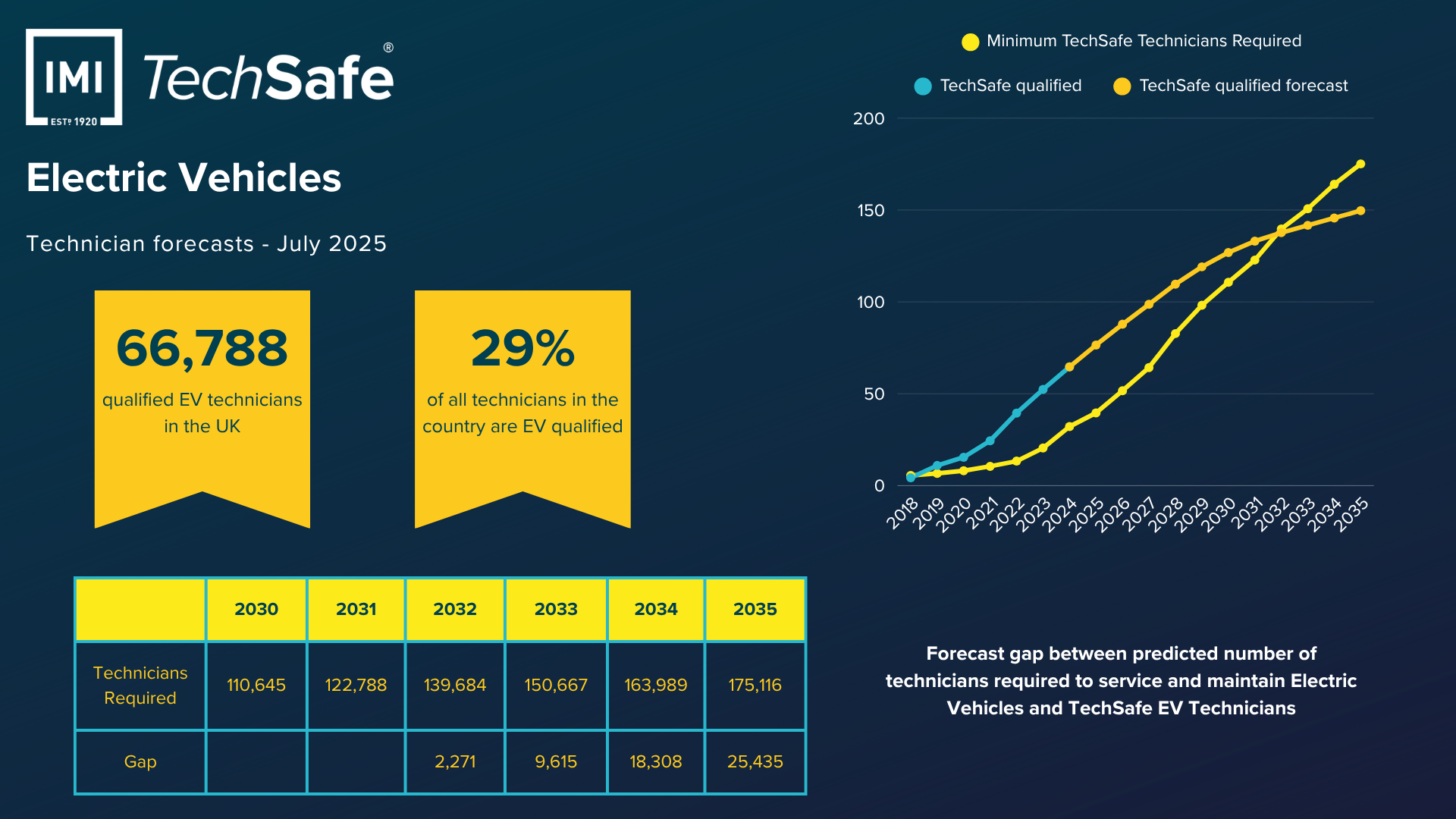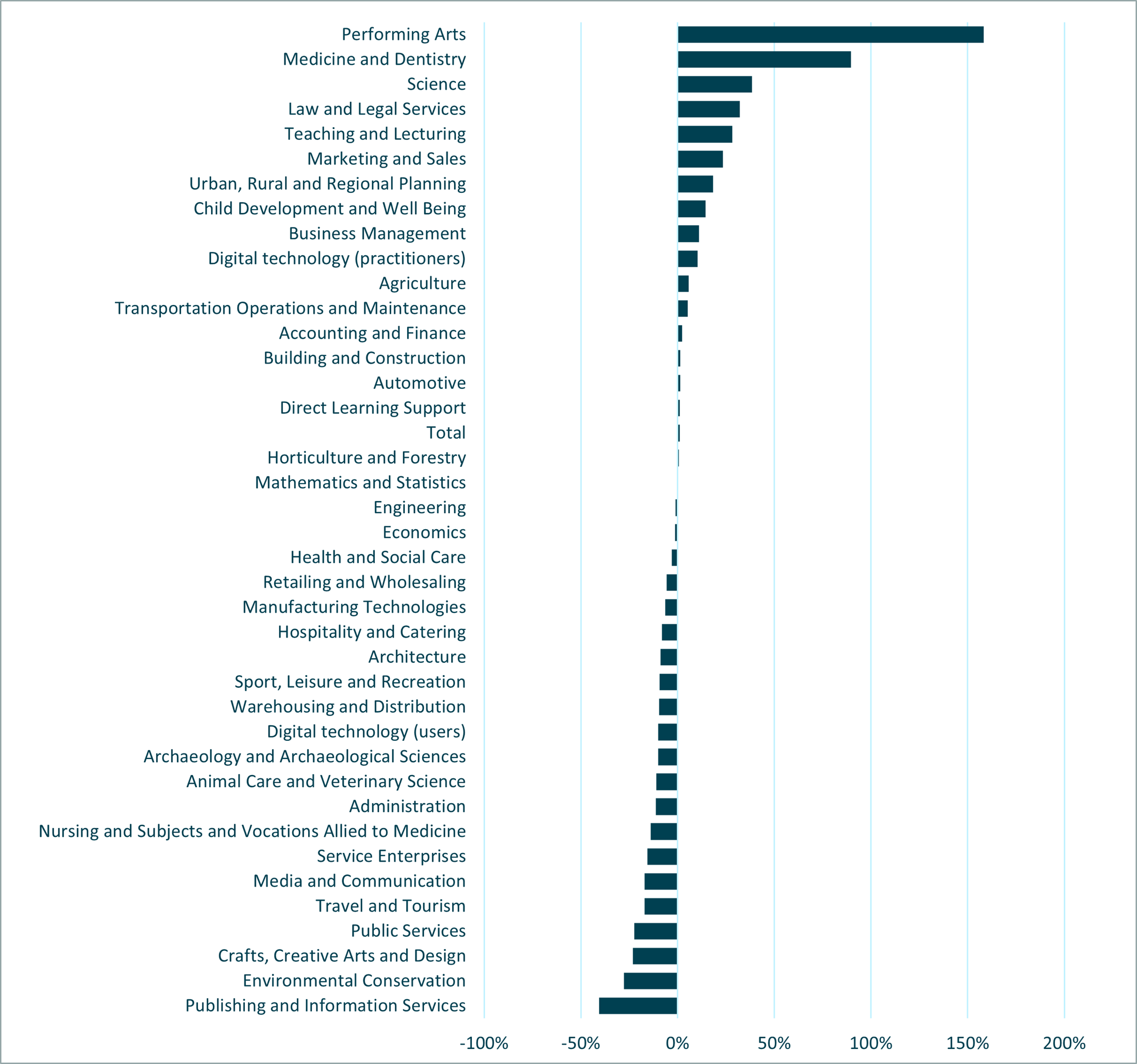Automotive Education Report Edition 15

This report explores the latest trends in automotive qualifications and apprenticeships across England, Scotland, Wales and Northern Ireland. It draws on the most recent data available, including apprenticeship statistics from the Department for Education (DfE).
Automotive education and training in the UK shows signs of stabilising. The latest data for January to March 2025 highlights steady qualification numbers, strong EV training activity, and a mixed picture for apprenticeships.
Q1 2025 at a glance
- Awarding bodies issued 8,902 automotive certificates, 6% more than last year
- EV and hybrid qualifications accounted for 43% of all completions
- The IMI Level 3 Award in EV system repair and replacement led the field, making up 15% of all certificates
- Apprenticeship starts increased by 1% compared with last year but remain 30% below pre-pandemic levels
- Heavy Vehicle apprenticeships grew by 8%, reflecting demand in logistics and transport
- MET and lift truck apprenticeships dropped by more than 35%, raising concerns about future specialist skills
Stability returns to automotive training
In the first quarter of 2025, awarding bodies issued 8,902 automotive certificates, almost the same as the previous quarter and 6% more than last year. Certificate numbers have fallen 5% over the longer term, but the recent trend suggests greater stability.
Level 3 qualifications accounted for more than half of all awards, while Level 2 made up just over a quarter. The top ten qualifications together represented 68% of all completions, showing that learners and providers are concentrating on a smaller number of pathways, especially in low-emission technologies.
EV skills still lead, but not fast enough
EV and hybrid qualifications continued to dominate in Q1 2025, making up 43% of all completions. Numbers grew 6% compared with the previous quarter, but they still fell 25% short of last year.
Learners most often chose the IMI Level 3 Award in Electric/Hybrid Vehicle System Repair and Replacement, which accounted for 1,352 certificates.
However, our July TechSafe projections indicate 139,684 qualified EV technicians overall by 2032, 150,667 by 2033 and 175,116 by 2035. Expected demand reaches the same figures, leaving a shortfall of 2,271 in 2032, 9,615 in 2033, 18,308 in 2034 and 25,435 in 2035.
Apprenticeships recover slowly
In the first three quarters of 2024/25, learners started 7,340 automotive apprenticeships. Starts increased by 1% compared with last year but still sit 30% below pre-pandemic levels.
Light and heavy vehicle pathways now represent more than half of all starts. Heavy Vehicle apprenticeships grew by 8%, supported by demand in freight, logistics and public transport.
Starts grew by just 1% compared with last year, but still sit 30% below pre-pandemic levels
In contrast, MET and lift truck apprenticeships both fell by more than 35%. Autocare Technician starts slipped by 3%, although they remain the second most popular choice.
Looking ahead
The first quarter of 2025 shows that the automotive training system has steadied, but it still does not build the momentum needed for long-term skills security. EV qualifications continue to lead, yet growth remains too slow to close the future skills gap.
What the full report covers
The full report explores these themes in more depth, including insights on ADAS training and the role of levy funding in shaping apprenticeship pathway, including:
- A deeper analysis of qualification and apprenticeship trends;
- Insights into electric and hybrid vehicle training uptake; and
- The latest TechSafe data to support workforce and skills planning.








